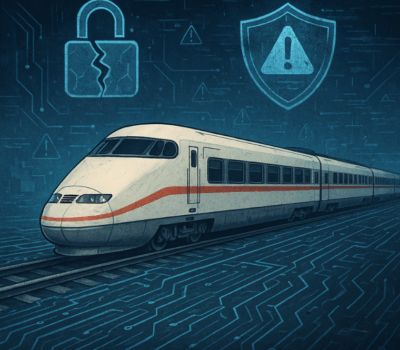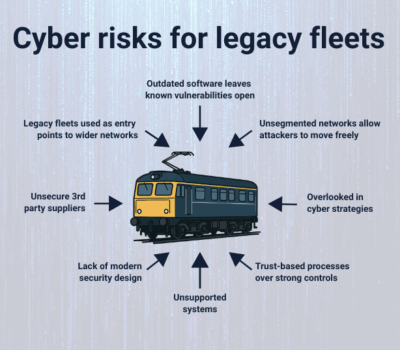Are your maintenance manuals slowing you down? How a review can boost efficiency
For train operators, every minute of downtime matters. Delays ripple through the network, causing frustration for passengers and increasing operational costs. When a train is out of service, maintenance teams work under immense pressure to resolve issues quickly. However, one of the biggest obstacles to efficiency is often overlooked – outdated and unclear maintenance manuals and processes.
Why maintenance documentation reviews matter
Often, engineers have been carrying out maintenance work for years and rarely need to consult documentation. However, these manuals are still crucial in ensuring compliance with updated health, safety and regulatory standards.
Additionally, they provide a reference point for validating that the processes being followed are still relevant. A review of these manuals is essential – not just to ensure compliance – but also to verify that the procedures outlined are still valid and effective. Outdated processes can cost operators valuable time and money by leading engineers through unnecessary or incorrect steps.
Common issues in maintenance manuals
A maintenance manual should be a reliable, easy-to-use resource. However, many fall short due to:
- Unclear steps – Instructions that are too vague, assume prior knowledge or lack enough detail which can leave maintenance staff confused and have to fill in the gaps.
- Missing details – Key information, such as updated tooling, procedures or materials, may be missing.
- Outdated procedures – If manuals haven’t been reviewed in years, they may not reflect modifications or newer technologies.
- Poor organisation – If engineers struggle to find the information they need quickly, valuable time is wasted.
Even small inefficiencies can add up. If a repair that should take 30 minutes stretches to an hour due to unclear documentation, the delays compound across the network.
Example scenarios: The impact of poor maintenance documentation
Outdated or unclear maintenance manuals or processes don’t just waste time – they increase costs and risks. Here are some examples of how documentation challenges impact rail maintenance:
- Brake system inspections taking longer than necessary. A scheduled maintenance check on a train’s braking system is delayed because key specifications have been updated in practice but not in the manual. Engineers need to cross-reference multiple sources, increasing downtime. A clear, updated document would ensure checks are completed efficiently.
- HVAC system repairs causing repeat callouts. Take, for example, a case of repeated HVAC system failures despite multiple repairs. The root cause? Outdated wiring diagrams in the manual led engineers to focus on repairing non-applicable components.
To make matters worse, HVAC repairs require roof access, meaning a gantry or platform must be used. In many depots, only one road with such access is available. As you can imagine, time on this road is precious and often booked in tight slots to maximise usage – further exacerbating the problem and causing further delays. A proper documentation review would have prevented unnecessary rework and reduced service disruptions.
How a maintenance documentation & process review can help
A comprehensive maintenance documentation and process review goes beyond improving the structure and formatting of manuals. It ensures that engineers can access the information quickly and accurately – ultimately improving efficiency and reducing train repair downtime.
Ensuring compliance with health, safety, and regulatory standards. Maintenance manuals often need updates to reflect changes in equipment, new technologies and evolving safety or regulatory requirements. A thorough review ensures the documentation aligns with the latest industry standards, reducing the risk of non-compliance or errors.
- Ensuring compliance with health, safety, and regulatory standards. Maintenance manuals often need updates to reflect changes in equipment, new technologies and evolving safety or regulatory requirements. A thorough review ensures the documentation aligns with the latest industry standards, reducing the risk of non-compliance or errors.
- Validating processes to prevent inefficiencies. A process validation check ensures that the procedures described in the manuals are still relevant. Without this step, outdated processes may continue, leading to unnecessary steps that waste time and resources.
- Identifying knowledge gaps. A review helps uncover missing or incomplete information, ensuring that essential details, such as updated procedures, materials or tools, are added. This enables engineers to perform maintenance tasks without relying on guesswork.
- Creating consistency across manuals. When you have multiple maintenance manuals for different systems, a review ensures consistent terminology, processes and layout. This helps engineers get familiar with each system, making their work more efficient.
By fine-tuning your maintenance documentation, you reduce train repair downtime, improve rail maintenance efficiency and give the engineers the confidence to complete repairs faster.
If you haven’t reviewed your maintenance documentation recently, now is the time. A small investment in better documentation can result in significant savings in time and cost – keeping your trains running and your passengers happy.
Schedule a documentation review today!
If you need a fresh perspective on your maintenance documentation – get in touch. Encompass Engineering offers comprehensive maintenance documentation reviews and process validation to help rail maintenance efficiency and train repair downtime. Find out how we can support your team.






